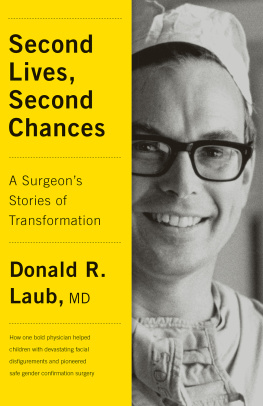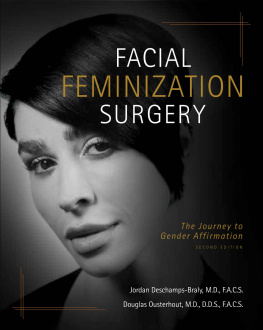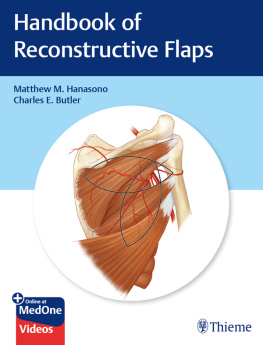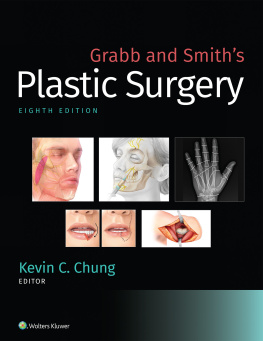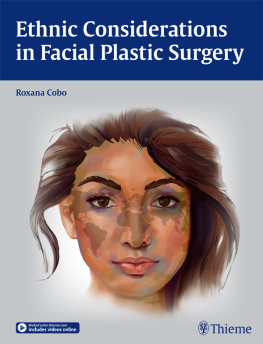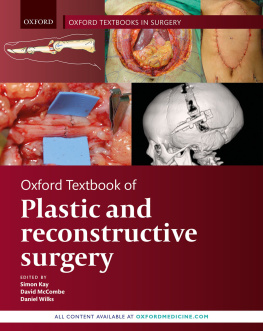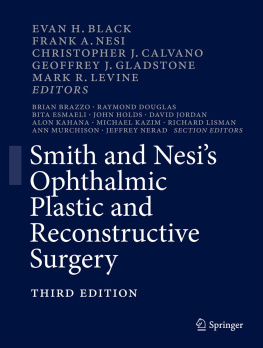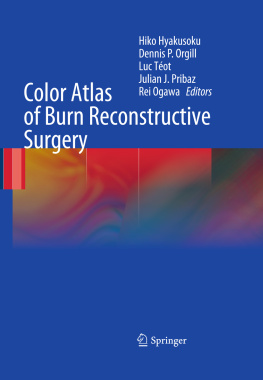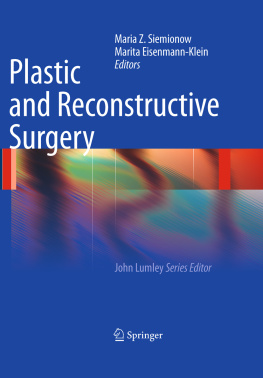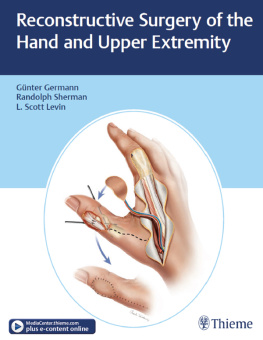I couldnt write the letter g.
Id just finished a complicated and successful gender confirmation surgery giving a trans man the completely functional penis he longed for using techniques Id developed that are now the global standard. My older son assisted me in the procedure; hes a talented plastic and reconstructive surgeon, and working with him was a pleasure. My wife, all five of our grown children, and their children were thriving. So was Interplast, the medical humanitarian organization I founded in 1968 to bring free surgical care to the developing world. Since then, volunteer surgeons in association with Interplast have performed more than 200,000 life-transforming operations to correct devastating physical deformities, from cleft lips and palates to burn scars.
Though Id recently retired as the head of the Department of Plastic & Reconstructive Surgery at Stanford University Hospital, I still had a lively and satisfying career as president of the nonprofit Gender Dysphoria Program in Palo Alto, California. I was in my mid-sixties, fit and feeling fine for a man in what I liked to think of as the early autumn of life more like the Indian summer. All was well. I began a postoperative report to the patient, intending to write the magic words, Surgery was successful but I couldnt remember how to form the letter g.
Soon my brain was unable to summon other letters. I couldnt walk down a hallway without bumping into walls. Then I flunked a couple of simple neurological tests. Clearly, something was wrong. Youve had a stroke, my neuropsychologist told me. Ive had a steak, I reported to my wife.
But it wasnt a steak or a stroke. It was a rare, aggressive, and lethal kind of brain cancer intravascular central nervous system large cell lymphoma. After more than forty years as the physician, I was about to be the patient.
An extraordinarily skillful and kind team at the University of California San Francisco Medical Center deployed a new kind of smart bomb chemo, and after six sessions of treatment in the hospital, I recovered from a disease that has a reported survival rate of only 15 percent. That can get a man thinking.
This book is a result of those musings. Its a look back at a life in medicine, told through key moments: hard knocks, soft landings, stupid mistakes, and smart mistakes; tough choices, lucky breaks, happy coincidences, and scientific leaps; life-changing encounters with mentors, patients, colleagues, friends, and enemies. Ive written this book for people whove been patients and those who care for patients; people with deep medical backgrounds and people with none. (For the latter, Ive endeavored to explain medical terms and procedures in an accessible way.) Its for anyone whos interested in what makes their fellow human beings tick and how theyre fixed when the ticking goes awry.
Every step of my life as a physician has been powered by the same internal forces: a deeply felt sense of duty to do good in the world; an unending appetite for interesting (i.e., difficult) cases; a love of adventure; a contrarian streak that always made me react to the word no with an ornery yes; and a dash of showmanship. Again and again, I had to take on members of the medical establishment who were quick to tell me that the things I wanted to do deliver free surgery to the developing world; invent and improve surgical procedures that allow trans people to have the bodies they want; teach surgical interns not by the time-honored method of slowly doled-out graduated responsibility, but through early hands-on training in the operating room were unethical, immoral, impractical, or plain crazy. That they couldnt and shouldnt be done. At times my enthusiastic embrace of risk in the name of humane medical innovation has gotten me into big trouble. Sometimes, with the help of farsighted and forward-thinking mentors and colleagues, its gotten big, beautiful results. And sometimes, I couldnt tell the trouble from the good results. Ultimately, the outcome has been high psychic income the great joy that comes from saving and enriching the lives of patients, and from teaching others how its done.
I became a doctor because my father didnt, and I became a plastic and reconstructive surgeon because of a maroon Cadillac, a bunch of high school bullies who threatened to beat the crap out of me, and an embarrassing DIY tattoo.
But perhaps the path was laid even earlier.
I was almost born on December 31, 1934, at 11:38 p.m., but the doctor pushed my head back into the birth canal to await the stroke of midnight. I was unable to be brought down again by my mothers efforts, and the doctor had to extract me using forceps. I was the first baby born in Milwaukee in 1935, and my picture was in the newspaper. The pressure of the forceps accounted for a small bald area on the right side of my forehead and may, some members of my family think, be responsible for a lifetime of outside-the-box behavior. I was the second of four children, three boys and a girl. We all went to Catholic school. My father, Rudolf Laub, sold insurance, and my mother, Ella Donnersberger Laub, not only made a safe and happy home but was an energetic organizer of community projects and probably ought to have run for elected office.
Growing up in the Milwaukee suburb of Shorewood, a place with lots of elm trees and plenty of parental emphasis on education, our crew me and the six boys Id hung out with since kindergarten stood out for our swagger. Or so we thought. During our freshman year at Marquette University High School, my best friend, Bill Griffith, had the habit of borrowing his fathers new maroon Cadillac while his parents were at church on Tuesday evenings. Hed hotwire the car in the church parking lot by shoving a silver dollar under the ignition. Then all of us would drive around town pretending we were adults. Wed return the Cadillac just before the service let out, hoping wed get the same parking spot. We were never caught.
One night we got cocky; we took the car right from the Griffiths garage and drove to a football game, our school versus Whitefish Bay High School. While we were strutting around during halftime thinking we were pretty tough, some much bigger, much tougher Whitefish Bay boys picked a fight. Outmatched, we ran to take refuge in the Cadillac and locked ourselves inside. But the Whitefish Bay boys jumped up on the hood, tried to smash the windows, and put a dent in the rear fender that was detected the next morning by Dr. Griffith, Bills father. Griff got a good licking from his mother, a tough German lady.
The seven of us dedicated ourselves to revenge, determined to beat up those Whitefish Bay guys. We taught ourselves ju-jitsu from a library book and took some rather extreme steps in our quest to toughen up. Dan Riordan cut the veins on his wrists with his hunting knife, and we drank his blood. Jack Slater fashioned some brass knuckles by pouring molten lead into a homemade plaster mold of his fist. I burned my initials, DRL, into my forearm with a cigarette in order to prove that pain could be overcome by the force of the brain mind over matter, la Lawrence of Arabia. I washed the wound with alcohol daily to prevent infection, and I wore a long-sleeved shirt for a couple of months so my mother couldnt see what Id done. When the burn scabbed over and healed, my initials stood out in white. I also demonstrated the concept of mind over matter and my toughness by eating dirt and, Im chagrined to recall, personal waste products. I was willing to eat shit to prove to my pals that I was a wild man.

